Photos: Huge Solar Flare Sparks Major Radiation Storm
Huge Solar Flare Seen by Solar Dynamics Observatory - January 23, 2012
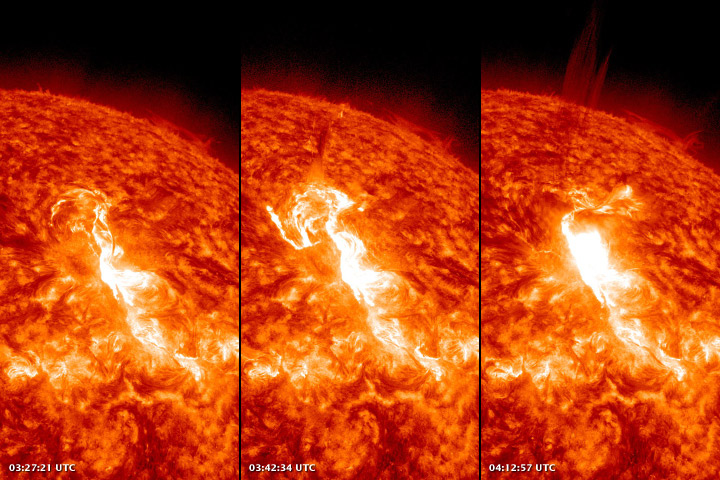
The images above show a HUGE solar flare as observed by the Atmospheric Imaging Assembly (AIA) on NASA’s Solar Dynamics Observatory (SDO) at 0327, 0342, and 0412 GMT on January 23 (10:27 p.m., 10:42 p.m. and 11:12 p.m. EST on Jan. 22).
Solar Flare Radiation 'Snow' - Jan. 23, 2012

Fast-moving protons from a solar energetic particle (SEP) event cause interference that looks like snow in these images from the Solar Heliospheric Observatory taken on January 23, 2012.
Solar Flare Captured by Solar Dynamics Observatory
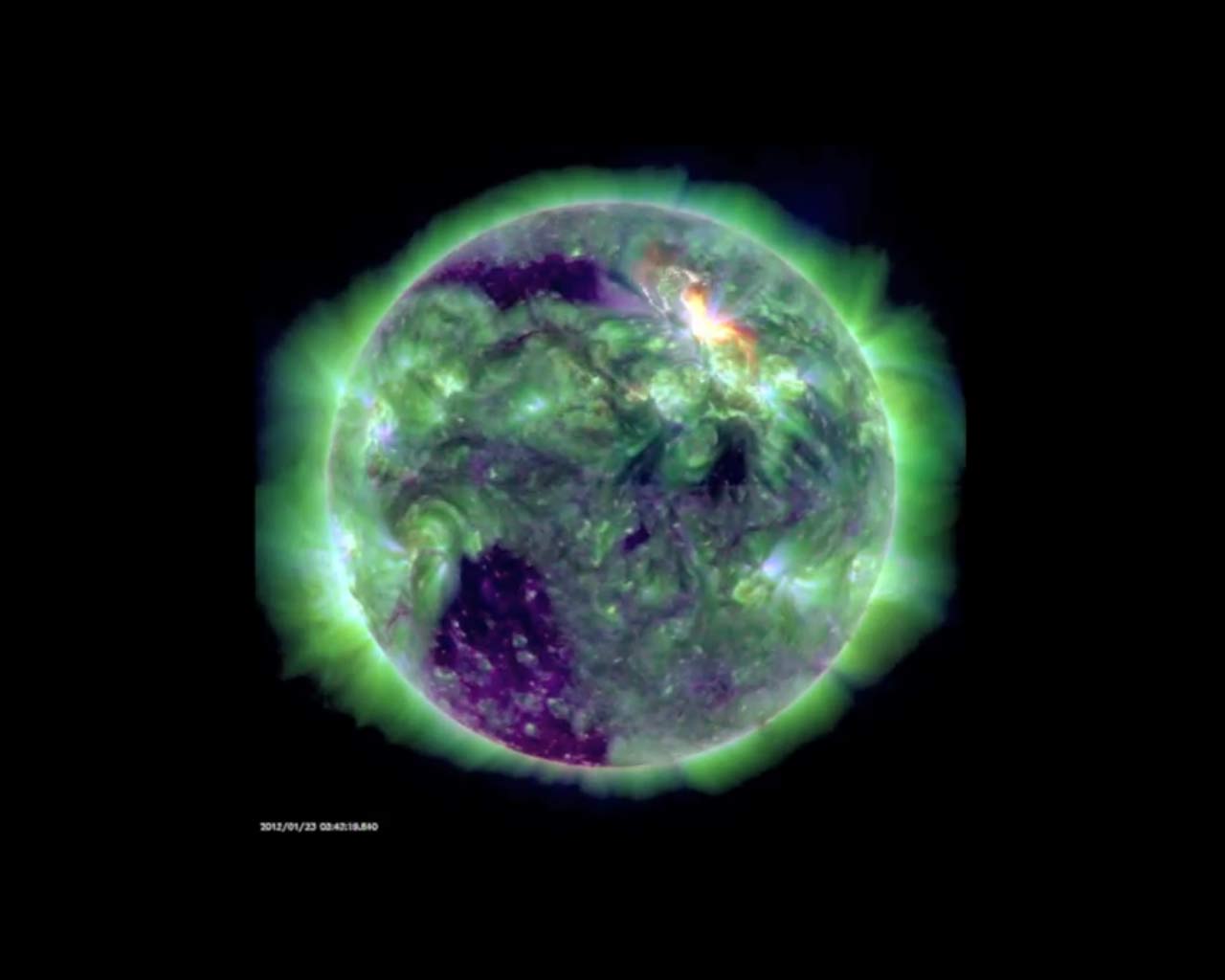
NASA's Solar Dynamics Observatory observed the massive solar flare that erupted on the sun on Jan. 23, 2012 (0359 GMT; 10:59 p.m. EST).
Sunspot Region 1402
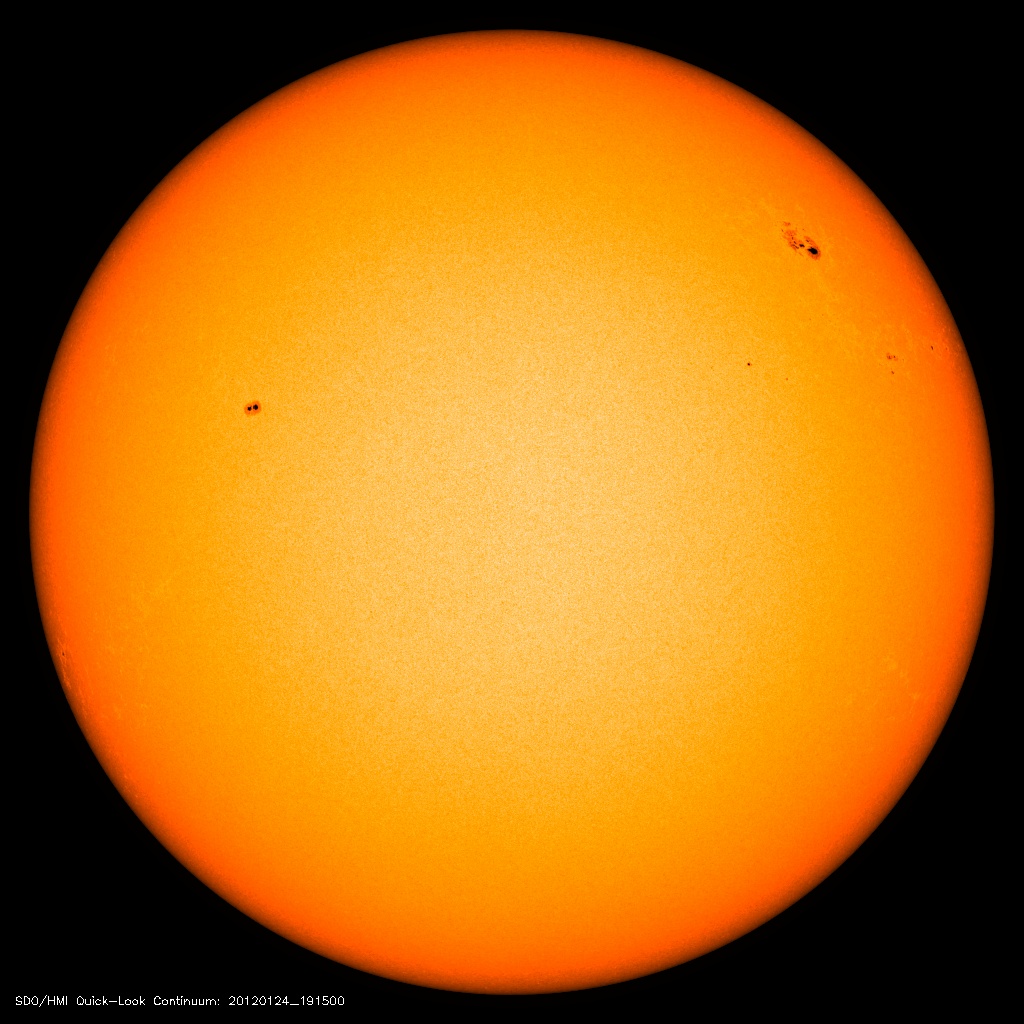
This image from one of the cameras on NASA's Solar Dynamics Observatory shows the sun as it appeared on Jan. 24, 2012. The sunspot grouping in the upper right of the sun's disk is known as Active Region 1402, a sunspot region responsible for recent solar storms. The prominent spot on the left is region 1408.
Solar Dynamics Observatory Sees Jan. 23 Solar Flare

NASA's Solar Dynamics Observatory observed the M9-class solar flare that sparked the strongest radiation storm since 2005.
Solar Storm X-ray Image - GOES spacecraft
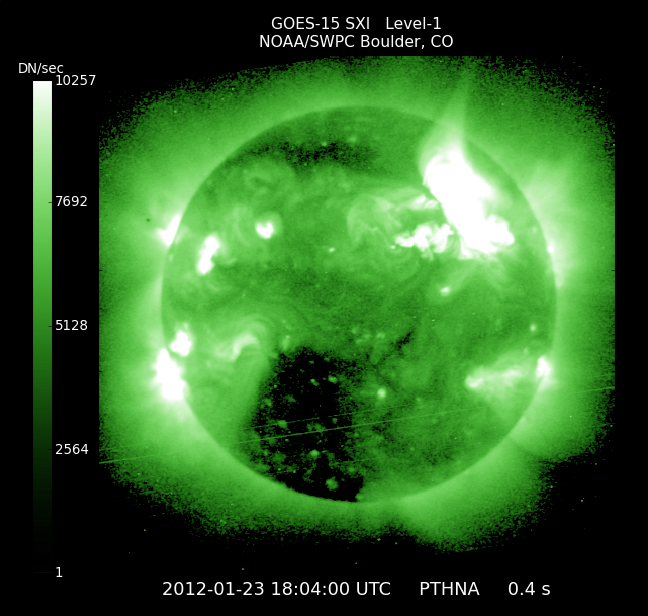
The NOAA-operated GOES-15 spacecraft captured this X-ray image of a massive solar storm on Jan. 23, 2012.
M9 Solar Flare, January 23, 2012
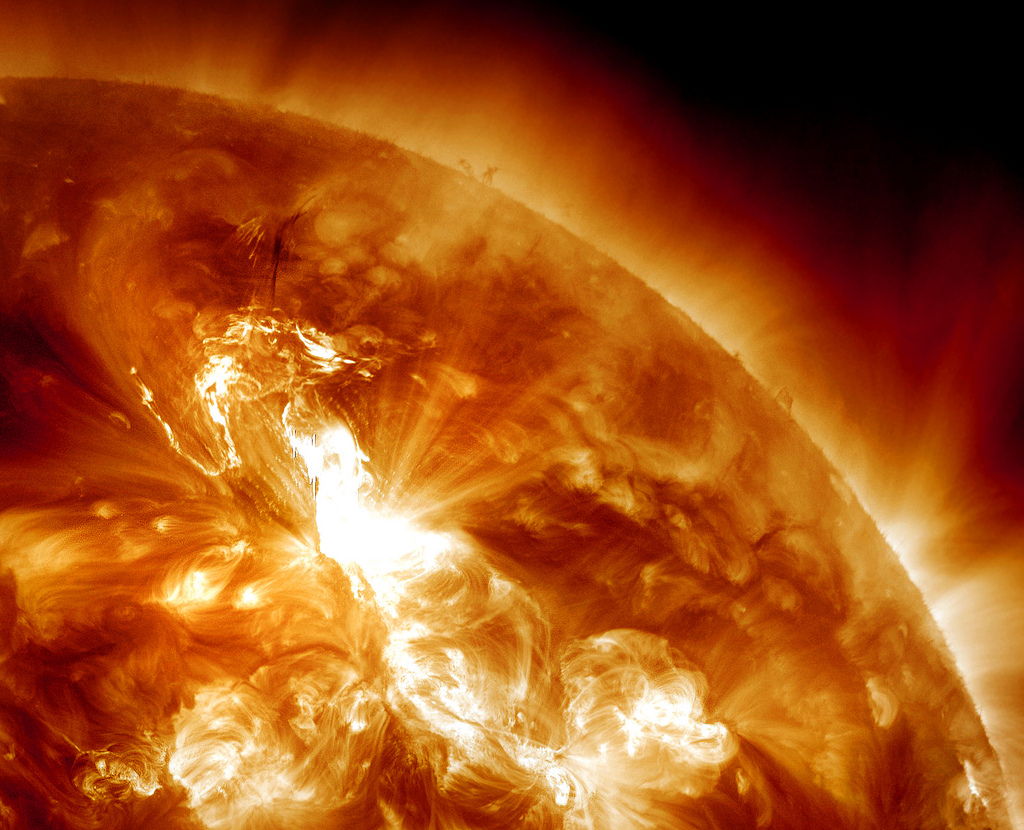
This SDO image (AIA 193) shows an M9-class solar flare erupting on the Sun's northeastern hemisphere at 03:49 UT on Jan. 23, 2012... just 4 days after a previous strong CME that sparked aurora around the world on the 22nd. More geomagnetic activity is expected for the 24th.
Get the Space.com Newsletter
Breaking space news, the latest updates on rocket launches, skywatching events and more!
Solar Flare Seen by NASA's Solar Dynamics Observatory
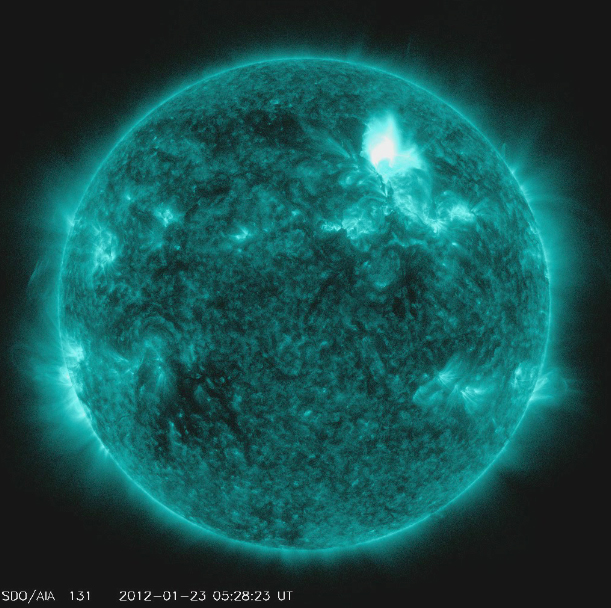
NASA's Solar Dynamics Observatory captured the flare, shown here in teal as that is the color typically used to show light in the 131 Angstrom wavelength, a wavelength in which it is easy to view solar flares. The flare began at 10:38 PM ET on Jan. 22, peaked at 10:59 PM and ended at 11:34 PM.
M9-Class Solar Storm of Jan. 23, 2012
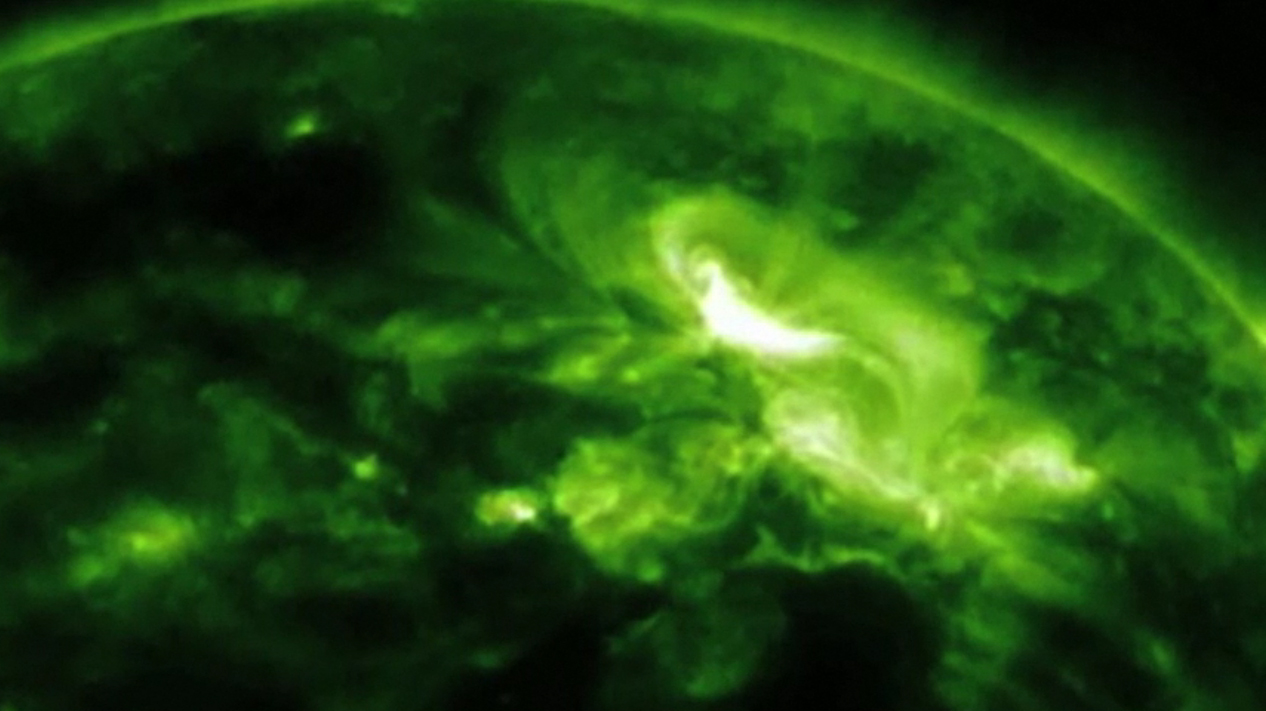
This video still from a NASA space observatory video shows one of many views of a powerful M9-class solar storm that unleashed a coronal mass ejection toward Earth in the early hours of Jan. 23, 2012 (GMT),
Solar Flare & Coronal Mass Ejection Seen by SOHO Spacecraft

The Solar Heliospheric Observatory (SOHO) captured the coronal mass ejection (CME) from a huge solar flare on Jan. 23, 2012.
Solar Flare & Coronal Mass Ejection - Jan. 23, 2012
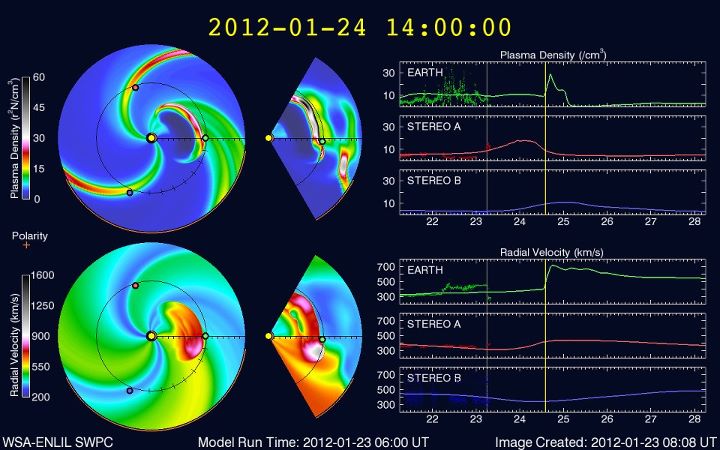
A model from the National Oceanic and Atmospheric Administration shows the coronal mass ejection arriving Tuesday (Jan. 24) at 9am EST (1400 GMT). The 'bump' on Jan 24 in the green traces is the coronal mass ejection arriving at Earth.
Join our Space Forums to keep talking space on the latest missions, night sky and more! And if you have a news tip, correction or comment, let us know at: community@space.com.

Space.com is the premier source of space exploration, innovation and astronomy news, chronicling (and celebrating) humanity's ongoing expansion across the final frontier. Originally founded in 1999, Space.com is, and always has been, the passion of writers and editors who are space fans and also trained journalists. Our current news team consists of Editor-in-Chief Tariq Malik; Editor Hanneke Weitering, Senior Space Writer Mike Wall; Senior Writer Meghan Bartels; Senior Writer Chelsea Gohd, Senior Writer Tereza Pultarova and Staff Writer Alexander Cox, focusing on e-commerce. Senior Producer Steve Spaleta oversees our space videos, with Diana Whitcroft as our Social Media Editor.









